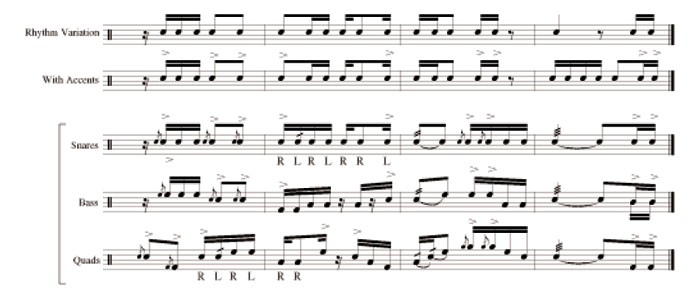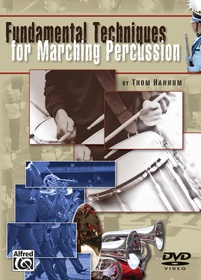

Combinations make use of three, two and one note patterns. The final section, Mixed Combination Phrases, combines the use of all the duple and triplet variations into one musical phrase. It also makes use of alternate duple and triplet notations, some of which are visually easier to read and/or recognize. Section four, Combination Phrases, combines the duple and triplet rhythmic patterns already learned, creating longer musical phrases. The music examples in this section can be used to form duets and increase ensemble awareness of mixed or matching phrases. Section three, Mastering the Variations & Phrases, expand the duple and triplet concepts. The second section, The Musical Phrase, introduces basic rhythm patterns and their variations in two short musical phrases Duple Check Patterns and Triplet Check Patterns.
#CHECK PATTERNS DRUMS THOM HANNUM PLUS#
The first section of the book, The Foundation, helps establish and build the recognition of duple and triplet rhythm patterns, reinforce consistent stickings, connecting stick motions, perfecting a feel for the downbeat pulse, plus boosting control of note lengths and spacing for rests.

Examples and suggestions are given for all three instrument types, plus individual and ensemble applications. Snare drum), keyboard percussion (aka mallet percussion), and drumset. It's important to note that everything notated in the book is written for non-pitched percussion (eg.

#CHECK PATTERNS DRUMS THOM HANNUM HOW TO#
Identifying and improving pulse control, rhythmic accuracy, note and rest lengths, as well as natural stick flow are all positive results from this type of approach.Ī Percussionist's Guide to Check Patterns begins with a well articulated introduction, explaining the concepts behind the method, followed by an in depth section on how to use the book. Secondly, the physical aspects of performance is enhanced by building technical control of syncopated rhythmic patterns through a consistent sticking method. First, it uses basic rhythmic building blocks as a means to help the percussionist improve the accuracy of their reading skills, via pattern recognition. metronome) play a constant flow of subdivisions while we work to perfectly line-up a particular rhythmic pattern, has been around since the earliest days of military drumming tradition.Ī Percussionist's Guide to Check Patterns is a 104-page book, with supplemental CD, that addresses two main areas for the developing musician. The concept of having someone or something (eg. Those of us who have spent any time with a drumline, whether it be through marching band or drum corps, are very familiar with the term "check patterns".

Thom is also a member of the design team for the Tony Award Winning show Blast! Thom currently teaches at the University of Massachusetts and is the founder/director of Mobile Percussion Seminar. He is probably best known for his work with the DCI World Champions, Cadets of Bergen County and Star of Indiana. The book's author, Thom Hannum, has long been regarded as one of the nation's foremost marching percussion arrangers, instructors, and clinicians. The accompaniment CD is perfect for individual practice, private lessons, small group instruction, or percussion ensemble rehearsal. All musical examples are written for non-pitched percussion, keyboards and drumset, and the step-by-step presentation is guaranteed to improve syncopation control and coordination skills if practiced thoroughly. It provides a systematic approach to sticking duple- and triplet-based rhythms that all beginning to advanced percussionists encounter in everyday music. An ideal book for private lessons, small group instruction or percussion ensemble rehearsals, A Percussionist's Guide to Check Patterns focuses on mastering the essential basics of reading and controlling one-beat rhythmic patterns.


 0 kommentar(er)
0 kommentar(er)
